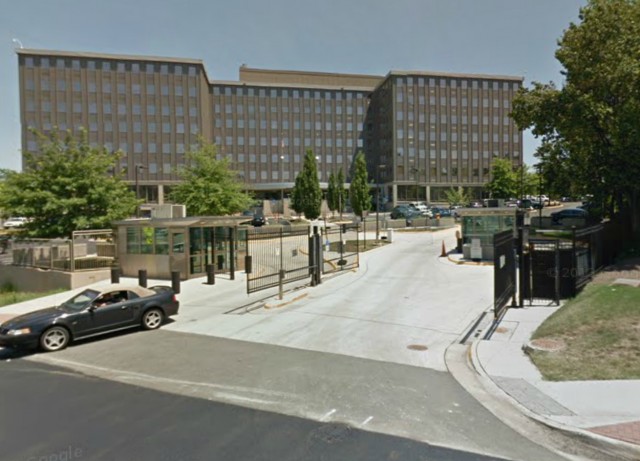
Every once in a while a topic comes along that I really want to write about but can’t seem to get to it. This time that topic is the Department of Defense (DoD) security standards. A big event occurred back on December 7th, 2012: DoD changed those standards. There are a lot of landlords in the nation who should be rejoicing, except that most probably never recognized the threat to their tenancy. DoD’s mandatory security standards were never widely communicated but they were very real, with the potential to create a lot of vacant buildings.
Some Background
Nearly ten years ago, in October 2003, the DoD quietly published its “DoD Minimum Antiterrorism Standards for Buildings” (a set of standards often referred to simply as the ATFP, for “Anti-Terrorism and Force Protection”). Many of these criteria were fairly easy to accommodate but others were were game-changers. Notably, the ATFP required that DoD facilities maintain protected perimeters with a minimum 82′ standoff distance. That would prove impossible to achieve in all but the most unique urban settings.
DoD phased these standards in for new leases beginning in October 2005 and for renewals and extensions beginning in October 2009 (resulting in a wave of renewals and extensions that would slip in right before that date). Once the security standards had been established the clock began ticking on a massive and inevitable exodus of DoD tenants from their existing offices to more secure locations. This would especially impact Northern Virginia, home of the Pentagon and also the largest concentration of DoD-leased space in the United States.
Yet, the security criteria presented a big problem for DoD as well: private sector developers weren’t building spec buildings with 82′ setbacks, laminated glass, progressive collapse resistance and secured parking. After October 2009, DoD was destined to find itself in a terrible bind because there weren’t existing buildings DoD could move to. But then along came BRAC. The BRAC legislation funded the movement of millions of square feet out of leased buildings – particularly in Northern Virginia – and into secure campuses or onto military bases. BRAC provided the billions of dollars required to construct these specialized facilities but, alas, this BRAC is now complete and it looks as though there won’t be another for a while. So, DoD found itself in a bind, again. Their peril was made more acute by the fact that the Obama Administration’s efforts to implement sustainable design and reduce the government’s carbon footprint. Since DoD facilities had to be constructed in the suburbs, away from public transportation, they did not maximize land utilization and they put more cars on the road – not fewer. In short, DoD’s secure campus design was at odds with emerging sustainability edicts.
DoD ultimately relaxed its security standards for two good reasons: 1. Their cost to lease highly secure facilities is well above the typical market and, once relocated into these facilities, DoD becomes a captive tenant upon renewal; 2. The facilities mandated by DoD’s security standards struggle to meet the aggressive sustainability goals emerging within the federal government – especially carbon footprint reduction.
What It All Means
Clearly, the DoD’s security standards had to change. If they didn’t, most DoD tenants would find themselves stranded once their leases expired. They would be prohibited from renewing in their current facilities and they would have neither the budget nor time to construct new facilities. Now, disaster is averted. This is true for landlords too. DoD can remain in the facilities they currently lease and many property owners will never know how close they came to losing their tenant. In markets like Arlington, Virginia, DoD can once again lease space close to its global headquarters, the Pentagon. This should ultimately provide a boost to the Crystal City, Pentagon City and Rosslyn submarkets (despite the specter of sequestration).
DoD will now abide by the Interagency Security Committee (ISC) standards that govern nearly all other federal agencies. This doesn’t mean that DoD won’t seek high security buildings. There are Defense agencies that will always require highly secure facilities with setbacks and other site protection but now DoD has the flexibility to apply security to match its needs.
